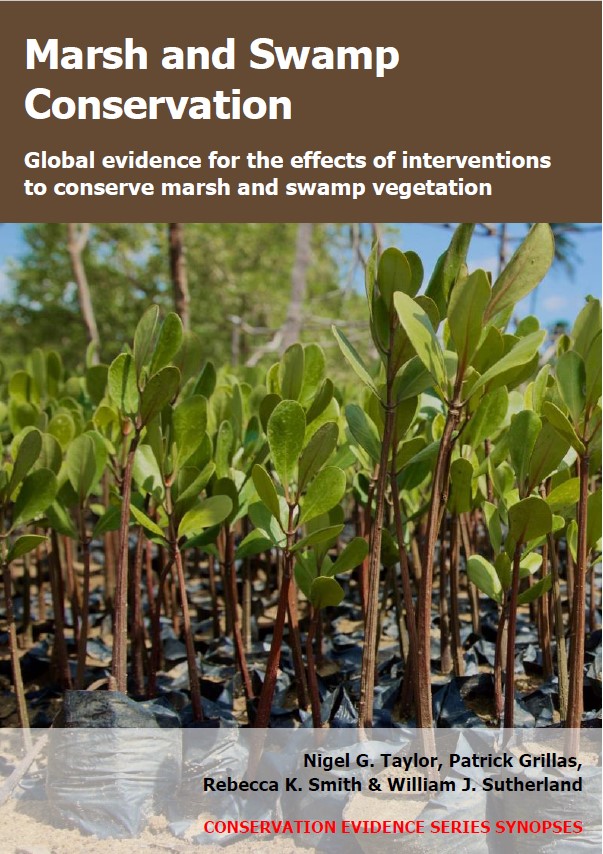Pay stakeholders to protect marshes or swamps
-
Overall effectiveness category Unknown effectiveness (limited evidence)
-
Number of studies: 2
View assessment score
Hide assessment score
How is the evidence assessed?
-
Effectiveness
50% -
Certainty
33% -
Harms
0%
Study locations
Supporting evidence from individual studies
A replicated, before-and-after, site comparison study in 2005–2012 of farmland ditches in England, UK (FERA 2013) found that managing ditches under an agri-environment scheme had no significant effect on the frequency of emergent vegetation or total plant species richness. After six years, 48–55% of ditches managed under agri-environment rules contained emergent vegetation. There were 6.1–6.5 plant species/ditch (emergent, aquatic and terrestrial combined). These values did not significantly differ from ditches not managed under agri-environment rules: 62% contained emergent vegetation and there were 6.4 plant species/ditch. Additionally, there was no change over time in the proportion of managed ditches that contained emergent vegetation: 39% just before or just after the agri-environment scheme began, then 34% five years later (statistical significance not assessed). Methods: The “Entry Level Stewardship” agri-environment scheme began in 2005/2006. Rules for ditch management included leaving half of the ditch banks uncut every year, and not cultivating within 2 m of the ditch centre. Vegetation in and along ditches was surveyed in 2005/2006, 2011 and 2012. Surveys included 52–170 ditches/year managed under agri-environment rules, and 16–17 ditches/year on farms not participating in the scheme.
Study and other actions testedA study in 2008–2016 in Nigeria (Wetlands International 2016) reported that paying community groups to use wetlands sustainably changed their behaviour. Fifty-eight community groups provided with access to micro-credits for sustainable development stopped practices that damaged mangrove forests (mainly cutting mangrove trees). They switched to practices less damaging to mangrove forests (such as fish and periwinkle farming) and contributed to wetland restoration. Methods: The payment scheme was implemented within the Bio-Rights framework. The study does not provide further details of the scheme, or quantify the behavioural changes.
Study and other actions tested
Where has this evidence come from?
List of journals searched by synopsis
All the journals searched for all synopses
This Action forms part of the Action Synopsis:
Marsh and Swamp Conservation
Marsh and Swamp Conservation - Published 2021
Marsh and Swamp Synopsis





)_2023.JPG)














